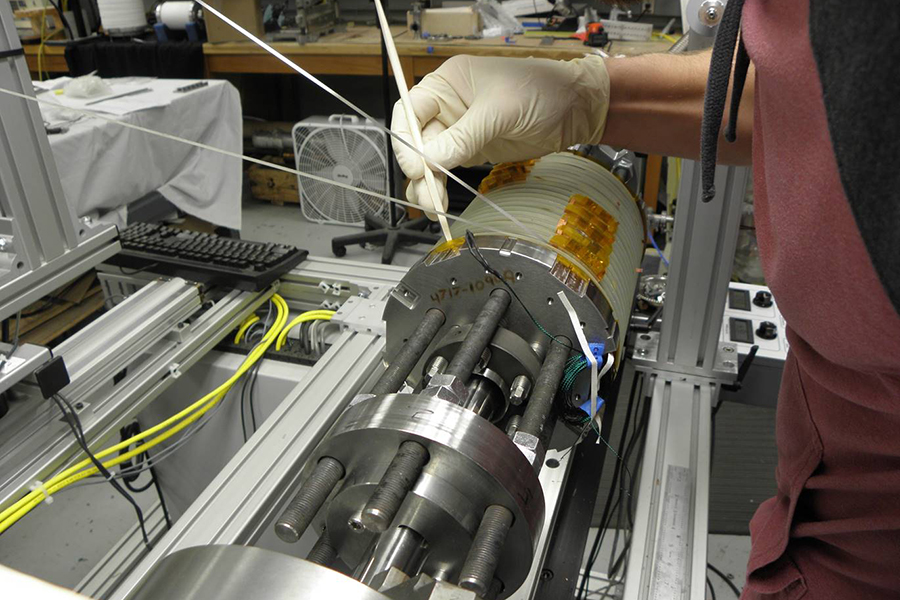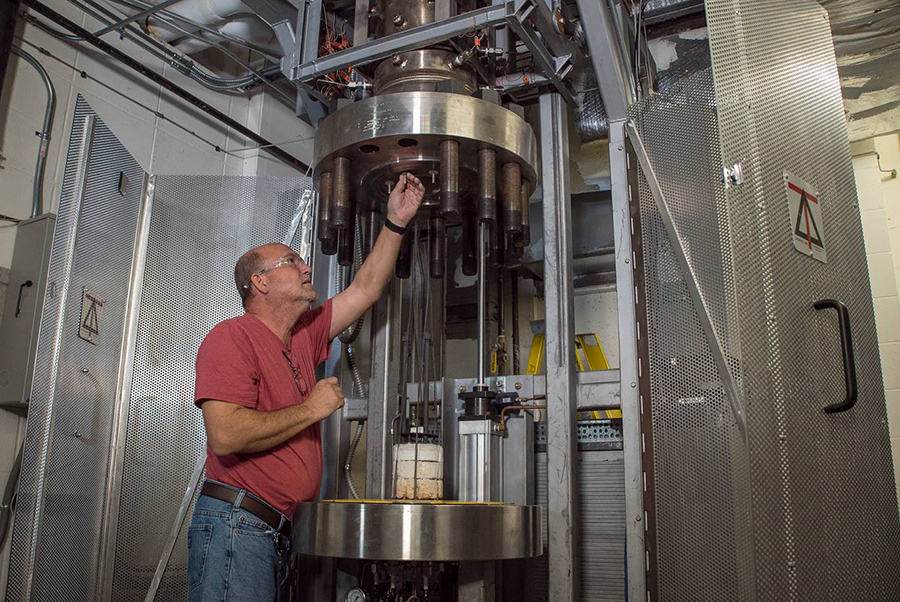
The National Science Foundation (NSF) has awarded $4.2 million to the National High Magnetic Field Laboratory to launch a research and development effort for the next generation of high-field superconducting magnets.
Headquartered at Florida State University in Tallahassee, the National MagLab is already home to a dozen world-record magnets. Every year, more than 1,800 scientists from across the world study a variety of materials and systems in these high fields as they probe mysteries of physics, biology and chemistry.
But just as astronomers need more powerful telescopes to make new discoveries about the universe, scientists need stronger superconducting magnets to learn more about the human body, the environment and the natural and man-made materials that make up the world and enable the latest technologies.
The magnets at the MagLab generate high fields by conducting large amounts of electricity in a coil. Better conductors will lead to better magnets. The NSF grant will fund the research and development of special kinds of conductors known as high-temperature superconductors (HTS).
These materials promise to generate much stronger fields than low-temperature superconductors like niobium-tin and niobium-titanium, which have been widely used in MRI machines and research laboratories for decades. Low-temperature superconductors work only at extremely cold temperatures and under fields of 25 teslas. A tesla is a unit of magnetic field; a typical refrigerator magnet generates a field of about 0.01 tesla.

HTS materials outperform them on both counts, operating at higher temperatures and in higher magnetic fields. This makes them promising for use in next-generation superconducting magnets. In fact, some scientists predict that HTS conductors might one day top 50 teslas. That would exceed not only all existing superconducting magnets but also all resistive and hybrid magnets, which to date have easily outpaced superconducting magnets in field strength.
“We don’t yet know exactly how far high-temperature superconductors will go, so we are focusing on 40 teslas, the stretch goal listed in a recent National Academy of Sciences report,” said Greg Boebinger, director of the National MagLab. “HTS conductors are without doubt the magnet materials of the future. But right now, we don’t know which of the leading HTS materials are most suitable for the next generation of superconducting magnets that our research community demands.”
The NSF grant will allow four teams of MagLab scientists and engineers to test several HTS conductors. Under consideration are two compounds of bismuth strontium calcium copper oxide (BSCCO) and two different conductor technologies using rare earth barium copper oxide (REBCO). Each team will focus on one of the four approaches.
“The MagLab houses the most well-rounded team of HTS experts on the planet,” Boebinger said. “Our scientists and engineers need to thoroughly vet the most promising HTS conductors as quickly as possible. After determining the best conductor, we hope to win funding to design and build a 40-tesla superconducting magnet using the new knowledge we will have developed under this exciting new grant.”



